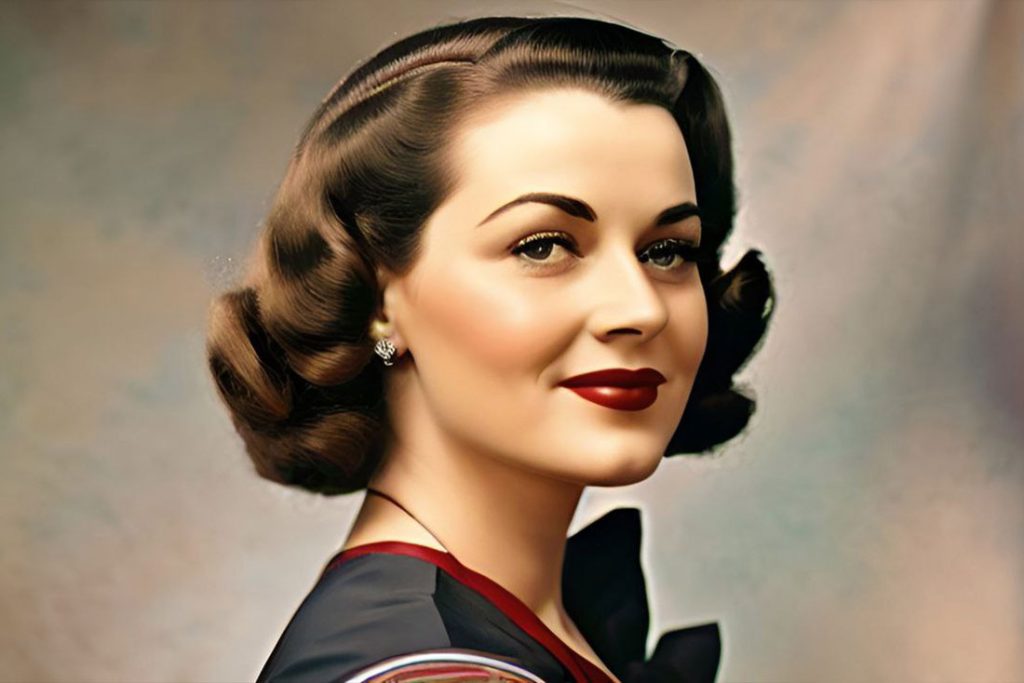The Evolution of Cosmetology: Pioneering Trends and Transformations of the 1940s
This article explores the significant shifts and innovative developments in the field of cosmetology during the 1940s. From iconic hairstyles and the advent of cold wave perms to advancements in salon hygiene and the introduction of hairspray, discover how this era laid the groundwork for contemporary beauty practices. Also, take a retrospective look at the contrasting trends of the 1930s, underscoring the dynamic nature of the beauty and personal care industry.

1940s hairstyle
The history of cosmetology in the 1940s was marked by several significant changes that not only affected the styles and preferences of that decade but also laid the groundwork for many of the practices and styles we see today.
The 1940s were defined by soft waves, curls, and rolls in women’s hairstyles. One of the most iconic looks of the decade was the Victory roll, a hairstyle that involved rolling the hair into tight curls and positioning them high on the head, which became a symbol of women’s support for the war effort. Men’s hairstyles in the 1940s were heavily influenced by the golden age of cinema, jazz, and World War II. Short-cropped military cuts, which were practical, neat, and easily maintained, became popular and served as precursors to modern-day buzz cuts, flat tops, and crew cuts. In addition, Pageboy and pixie haircuts also gained popularity during this period.
One significant development in hair care was the introduction of a new method for permanent waving in 1941. This method used a waving lotion and was known as a cold wave due to the absence of heat in the process. Modern versions of this method, usually referred to as alkaline perms, are still in use today.
The 1940s also saw several advancements in pedicure and foot massage services, with these becoming standard salon services in 1941. The aerosol can, which was originally invented during World War II to spray troops with insect repellent to prevent malaria, was later used to introduce hairspray to the market. This development marked a significant milestone in hair care, allowing for greater control and maintenance of various hairstyles.
Additionally, in 1947, Maurice King invented Barbicide, a disinfectant for styling tools. This invention marked a significant advance in salon hygiene, ensuring that tools used on multiple clients could be properly sanitized between uses, thereby reducing the risk of infection or disease transmission.
It’s worth noting that the cosmetology trends of the 1940s were a stark contrast from those of the previous decade. The 1930s saw a shift towards more natural looks, with makeup taking a departure from the bold styles of the 1920s. The use of pale ivory foundations became popular, resulting in a soft and delicate look. Pencil-thin eyebrows were also very popular, and women would often pluck their eyebrows away entirely just to paint them on with kohl.
Various types of makeup like cake mascara and Pan cake foundation became popular, the latter becoming commercially available in 1937. Eyeshadows saw a slight change in the 1930s with colors becoming more explorative, with shades like green, blue, and pink becoming popular. Lipstick colors also saw a massive renaissance in the 30s, with popular colors ranging from maroons and dark reds to oranges and raspberry tones.
While the 1940s marked a significant period in cosmetology history, it’s clear that the trends and practices of the 1930s set the stage for many of the changes that would follow. Understanding the evolution of cosmetology in these decades provides a clearer picture of the ever-changing landscape of beauty and personal care.







